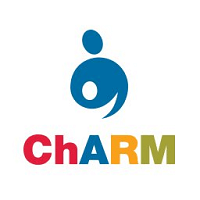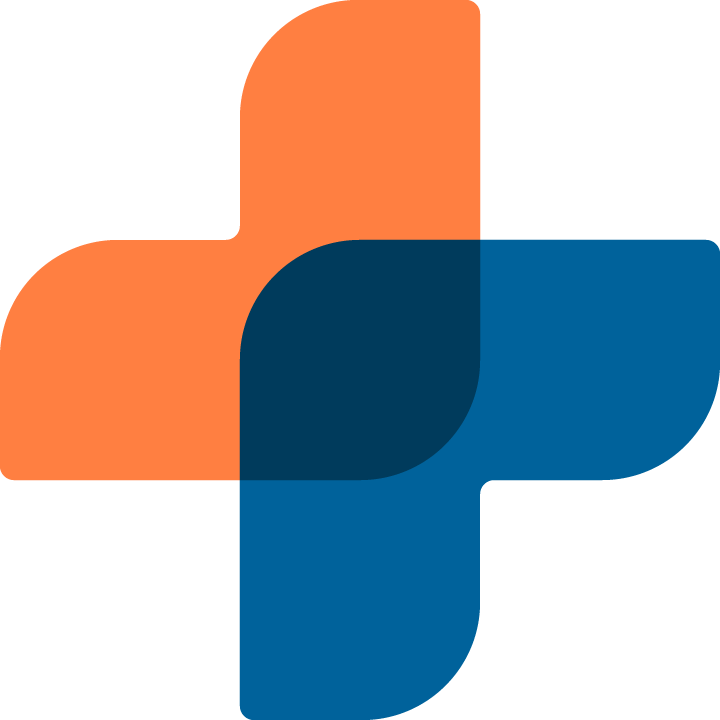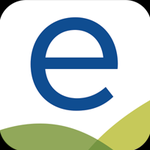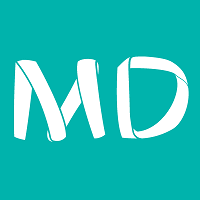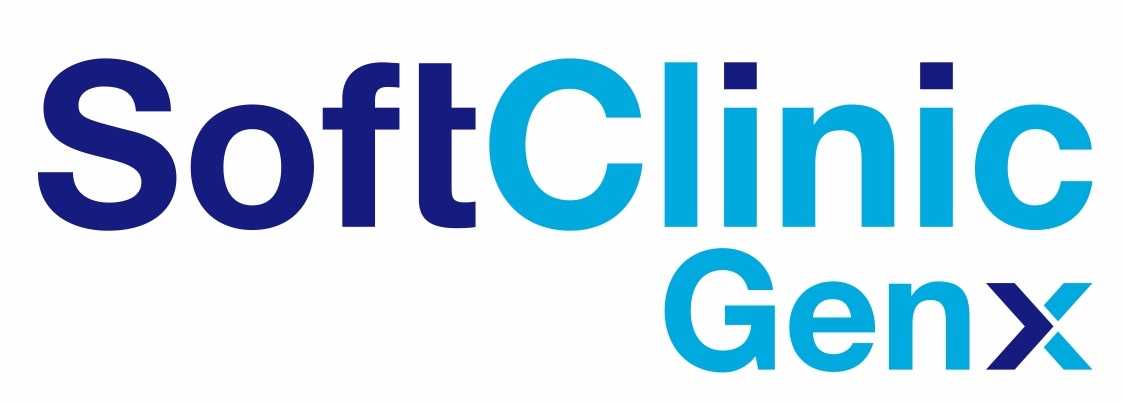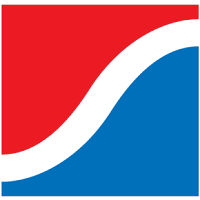What Is E Prescribing Software?
A form of medical technology called electronic prescribing software, or e-prescribing software, enables medical practitioners to electronically write and deliver prescriptions to a patient's preferred pharmacy. This enables a more precise and efficient prescription process and does away with the need for paper prescriptions.
By simplifying the prescription procedure and lowering errors, these software tools aim to enhance the entire patient experience. To guarantee that patients receive the safest and most effective prescriptions, they provide a range of services, including dosage recommendations, drug interaction checks, and formulary information. Additionally, healthcare professionals can benefit from e-prescribing software. It saves time and lessens administrative load by enabling simpler access to patient prescription history, electronic refill requests, and automatic renewal requests.
In order to make better decisions, providers can also obtain up-to-date data on insurance coverage and medication costs. Additionally, by sending patients refill alerts and medication reminders, e-prescribing software helps with drug adherence. In the end, this lowers the possibility of prescription errors and improves health outcomes.
Selecting an E-prescribing software system that is easy to use, interfaces seamlessly with current EHR systems, and provides a variety of capabilities to suit your practice's particular requirements is crucial.
What Are The Recent Trends In E Prescribing Software?
Healthcare technology is changing quickly, and e-prescribing software is no different. The newest features and trends in e-prescribing software are evolving along with technology. To make an informed choice when selecting e-prescribing software for your practice, it is crucial for buyers to be aware of these trends. You should be aware of the following current e-prescribing software trends:
1. Cloud-Based Solutions: The move to cloud-based solutions is one of the biggest developments in e-prescribing software. Any device with an internet connection can access these software solutions, which are housed on the cloud, at any time and from any location. This enhances cooperation and communication between medical professionals in addition to making it simpler for healthcare practitioners to prescribe drugs.
2. Mobile Applications: Many e-prescribing software companies have created mobile applications for their platforms in response to the proliferation of smartphones and tablets. By enabling providers to access the software and write prescriptions while on the go, these tools streamline and expedite the procedure. Additionally, it makes it possible for patients to obtain their medications electronically, which lowers the possibility of misplaced or unreadable paper prescriptions.
3. Electronic Prior Authorization (ePA): E-prescribing software is increasingly using electronic prior authorization (ePA). This feature saves time and lowers the possibility of errors by enabling providers to electronically submit pre authorization requests to insurance companies. By cutting down on pharmacy wait times, it also enhances the patient experience.
4. Integration With Electronic Health Records (EHRs): E-prescribing software that can be integrated with EHRs is gaining popularity. By minimizing the need for duplicate data entry and lowering the possibility of errors, this interface enables a smooth information flow between the EHR and e-prescribing software. Additionally, it offers a thorough overview of the patient's medical background, enabling more informed drug choices.
5. Electronic Prescriptions For prohibited Substances (EPCS): The capability to electronically prescribe prohibited substances is another new development in e-prescribing software. In addition to lowering the possibility of prescription fraud, this also makes it easier to track and monitor these drugs, improving patient safety.
Benefits Of Using E Prescribing Software
Software for electronic prescribing, or "e-prescribing," is a state-of-the-art innovation that has completely changed how medical professionals handle prescriptions. E-prescribing software has become a vital tool for pharmacies, hospitals, and medical practices due to the increased demand for streamlined and effective healthcare procedures. We'll go over the advantages of e-prescribing software in this buyer's guide and show you why it's a smart investment for your healthcare company.
1. Enhanced Safety For Patients: The improvement in patient safety is one of the main advantages of utilizing e-prescribing software. Errors like unreadable handwriting, inaccurate dosages, or possible drug interactions might occur when prescribing medications on paper. By offering a digital system that enables medical professionals to electronically submit precise and error-free prescriptions, e-prescribing software removes these hazards. In order to ensure safe and efficient treatment, it also makes it possible to retrieve a patient's medication history, allergies, and possible drug interactions in real time.
2. Savings Of Time And Money: Healthcare practitioners can save time and money by using e-prescribing software. Patients no longer need to go to the pharmacy to pick up paper prescriptions thanks to the automatic prescription transfer. Additionally, this lessens the possibility of medicines being misplaced or lost, which cuts down on administrative work and phone calls. E-prescribing software also expedites the drug refill procedure, cutting down on paperwork and follow-up calls.
3. Enhanced Efficiency And Workflow: The prescription procedure is streamlined by e-prescribing software, which does away with manual data entry and paper-based records. This reduces errors brought on by human data entering in addition to saving time. Additionally, by integrating with electronic health records (EHRs), e-prescribing software facilitates rapid access to patient data and improves comprehension of a patient's pharmaceutical requirements. Additionally, it makes it easier for medical professionals to prescribe prohibited medications electronically, which streamlines the process.
4. Improved Compliance With Medication: Features in e-prescribing software can help patients take their medications as prescribed. For example, it can send out automated reminders for medications, missed dose notifications, and refill notifications. These characteristics ultimately result in improved health outcomes by assisting patients in adhering to their prescription regimen.
5. Adherence To Regulatory Mandates: Regulatory bodies are also taking tough measures against paper-based prescribing practices as a result of the digitization trend. E-prescribing software helps healthcare practitioners stay out of trouble with the law and guarantees that regulations are followed. Additionally, it keeps an audit trail for every prescription, which facilitates monitoring of prescribed drugs.
Important Factors To Consider While Purchasing E Prescribing Software?
To make the greatest decision for your healthcare business, there are a number of crucial things to take into account when buying e-prescribing software. These elements consist of:
1. Integration And Compatibility: Verify that any e-prescribing software you buy is compatible with your existing electronic health record (EHR) system before making a purchase. This would guarantee smooth patient data sharing and integration across systems, enhancing productivity and patient care.
2. Features And Functionality: Take into account the software's features and capabilities. Does it have features like medication history, drug interaction checking, and electronic prescribing? Is it capable of managing lab orders, controlled substance prescriptions, prior authorizations, and prescription renewals? Verify if the program satisfies the particular requirements of your practice.
3. Ease Of Utilize: It's critical to select software that is easy for your employees to utilize. For an effective workflow, look for a system with a straightforward interface that requires little training.
4. Security And Compliance: It is crucial to protect patient data, particularly when it comes to electronic prescriptions. Make sure the software complies with HIPAA and has security features in place to shield patient information from online dangers.
5. Accessibility: Take into account if the software is usable on a variety of platforms, including PCs, tablets, and smartphones. This will make it possible for medical professionals to access patient information and write prescriptions while they are on the go.
6. Support And Training: To make sure your employees can use the program efficiently, look for software suppliers that give thorough training and support. In the event of future updates or technical problems, this will also be helpful.
7. Cost: When buying any software, cost is an important consideration. Examine the initial outlay, continuing maintenance charges, and any extra expenses for upgrades or add-on features. Verify if the software is affordable and offers good value.
What Are The Key Features To Look For In E Prescribing Software?
Look for essential features that will help you expedite your prescribing process and enhance patient care when selecting the best e-prescribing software for your healthcare firm. Here are some features to think about before buying:
1. Electronic Health Record (EHR) Integration: Seek out software that easily connects to your current EHR system. This would guarantee a seamless transfer of patient data and medication history, lowering the possibility of mistakes and saving time for patients and healthcare professionals alike.
2. Warnings About Drug Interactions And Allergies: A strong medication database that can identify possible drug interactions and allergies based on a patient's medical history is a must for any effective e-prescribing software. This can enhance patient safety and help avoid adverse medication effects.
3. Formulary Checking: At the time of prescription, it's critical for healthcare professionals to be able to verify a patient's insurance coverage and formulary. Prescription errors can be decreased and possible pharmacy rejections can be prevented with this functionality.
4. Prescription Refills And Renewals: Verify that the software provides a simple method for handling prescription refills and renewals. This can enhance drug adherence and save time for patients and physicians alike.
5. Electronic Prescribing Of Controlled Substances (EPCS): Given the increase in opioid addiction, it is essential that controlled substances be able to be electronically prescribed via E Prescribing Software. This guarantees adherence to national and state laws while also enhancing security and lowering fraud.
6. Personalization And Customization: Every healthcare company has different requirements and workflows. Seek software that can be tailored to your unique needs and preferences. Both user satisfaction and efficiency may increase as a result.
7. Training And Assistance: Verify that your staff will receive training and continuous assistance from the software provider. This can guarantee a smooth transition and assist in overcoming any obstacles that may arise throughout the implementation process.
8. Reporting And Analytics: An all-inclusive e-prescribing software should be able to monitor and report data, offering information on prescribing trends and pinpointing areas in need of development.
9. Mobile Accessibility: Since more healthcare professionals are using mobile devices, having e-prescription software that is optimized for mobile devices will make prescribing easier and more accessible for physicians who are always on the go.
10. Cost And Return On Investment (ROI): Take into account both the software's possible ROI and the overall cost of ownership. Seek out a solution that will yield a strong return on investment in addition to improving efficiency and patient outcomes.
Why Do Businesses Need E Prescribing Software?
Businesses need e prescribing software for several reasons. Let’s take a closer look at why this type of software is becoming essential for businesses:
1. Streamline Medication Management: E prescribing software automates the process of prescribing medications for patients. This streamlines medication management for businesses, as healthcare providers no longer have to manually write or call in prescriptions. This saves time and reduces the risk of errors, improving patient care and satisfaction.
2. Improve Efficiency And Productivity: With e prescribing software, businesses can save time and increase productivity. Prescriptions can be sent electronically, eliminating the need for healthcare providers to spend time deciphering handwritten prescriptions, and giving them more time to focus on treating patients.
3. Ensure Compliance: E prescribing software helps businesses comply with government regulations, such as the Drug Enforcement Administration's (DEA) electronic prescribing rule. This eliminates the need for businesses to keep track of paper prescriptions and reduces the risk of prescription fraud.
4. Access To Patient History: E prescribing software allows businesses to access their patients’ medication history, allowing for a more comprehensive approach to patient care. This helps reduce the risk of adverse drug interactions and enables healthcare providers to make informed decisions about the best course of treatment.
5. Increase Patient Safety: By eliminating the potential for error-prone processes like handwriting and faxing prescriptions, e prescribing software helps increase patient safety. In addition, electronic prescriptions are encrypted, making them more secure than traditional paper prescriptions.
6. Cost Savings: Using e prescribing software can lead to cost savings for businesses. By reducing the need for paper and printing supplies, businesses can save money on supplies and also decrease the chances of errors that could result in expensive medication errors.
7. Integration With Electronic Health Records (EHR): Many e prescribing software options can integrate with existing electronic health records (EHR) systems, making it easy for businesses to have a complete view of a patient’s medical history. This integration allows for a more seamless prescribing process and improves patient care.
How Much Time Is Required To Implement E Prescribing Software?
A number of steps and variables are involved in the multi-step process of e-prescribing software implementation. The complexity of the program, the size of the practice, and the degree of customization needed can all affect how long it takes to finish the implementation. Implementing e-prescribing software in a medical practice can take four to six weeks on average.
It is crucial to remember that this schedule may vary depending on the particular requirements and conditions of every practice. Selecting the best e-prescribing software that fits your practice's particular needs is the first stage in the installation process. To choose the greatest fit, this may entail investigating various possibilities, assessing their features and costs, and consulting with your team.
Data migration is the first step in the implementation process after the software has been chosen. This entails moving prescription lists and patient information from the old system to the new e-prescribing program. The amount of data and the interoperability of the two systems can affect how long this phase takes. The next step is for the practice to configure the software, which involves setting up the drug formulary, clinical decision assistance, and other settings according to the practice's preferences.
Training employees on the proper usage of the software may also be part of this process. Before going live, it is essential to fully test and evaluate the software's functionality. This procedure guarantees that the software is operating accurately and satisfying the particular requirements of the practice. Following testing and approval, the software can be put into use and the practice can begin prescribing drugs using it.
What Is The Level Of Customization Available In E Prescribing Software?
Healthcare facilities can improve drug management and raise the standard of patient care by implementing e-prescribing software. Understanding the degree of customisation available to match the unique requirements of your company is crucial when weighing your alternatives for e-prescribing software. Depending on the manufacturer and the particular features provided, different E-prescribing software offers varying degrees of customisation.
Nonetheless, most e-prescribing software alternatives provide for a great level of customization to fit the particular needs of your company. The capacity to build customized drug formularies according to your preferred brands, dosages, and prescribing habits is one of the main areas of customisation. This lets you make sure your doctors are choosing the best and most affordable drugs for your patients.
Furthermore, E Prescribing Software enables customisable drug warnings and interactions. Depending on the particular procedures of your company, you can establish rules and preferences to identify possible drug interactions, allergies, and duplications. Integrating with your Electronic Health Records (EHR) system is an additional component of customisation.
This guarantees precision and effectiveness in prescribing by facilitating the easy exchange of patient data and drug histories. Additionally, a lot of e-prescribing software choices allow you to customize drug schedules, dosages, and administration instructions for specific patient groups, like geriatric or pediatric patients.
Last but not least, some e-prescribing software provides customizable analytics and reporting features, enabling customized data analysis and insights to guide choices and enhance patient outcomes.
Which Industries Can Benefit The Most From E Prescribing Software?
Because it provides a more effective and secure method of managing prescriptions, electronic prescribing, or e-prescribing, software has grown in popularity within the healthcare sector. Although it might appear that this technology is primarily useful for healthcare professionals, it actually has many uses across a variety of businesses. The several industries that stand to gain the most from e-prescribing software will be covered in this buyer's guide.
1. The Medical Field: The healthcare sector is the most evident and well-known industry that stands to gain from e-prescribing software. The healthcare sector has embraced e-prescribing software rapidly because to the growing emphasis on patient safety and electronic health information. Handwritten prescriptions are no longer necessary thanks to this technology, which enables medical professionals to electronically create and submit prescriptions to pharmacies. Additionally, it offers instant access to a patient's prescription history, possible side effects, and formulary data, all of which contribute to better patient care and fewer mistakes.
2. The Pharmacy And Retail Sectors: E-prescribing software benefits the retail and pharmacy sectors just as much as it does healthcare practitioners. Pharmacists may handle prescriptions more rapidly and accurately with e-prescribing software, which lowers the possibility of mistakes and increases productivity. Additionally, it gives them access to patients' medication histories, which facilitates precise prescription management. It also simplifies the medication refill process by streamlining communication with medical professionals.
3. Facilities For Long-Term Care: E-prescribing software can also be advantageous for long-term care facilities, including assisted living and nursing homes. E-prescribing software can assist in tracking and organizing prescriptions, which can improve the overall quality of care when managing a large number of residents and drugs. Additionally, it enables real-time communication between medical professionals and facility personnel, guaranteeing residents receive their medications precisely and on time.
4. Facilities For Mental Health And Rehabilitation: Additionally, E-prescribing software is becoming more and more common in rehabilitation and mental health facilities. E-prescribing software can aid in streamlining the complicated pharmaceutical regimens typically seen at these hospitals. Additionally, it makes it possible to retrieve a patient's medication history in real time, which promotes coordinated care and lowers the possibility of negative drug interactions.
5. Public Health Organizations And Government Agencies: E-prescribing software can also be advantageous for public health and government entities, like Medicare and Medicaid. These companies can save money and enhance patient outcomes by enhancing the prescription process' accuracy and efficiency through the use of e-prescribing technology.
Conclusion
In conclusion, healthcare organizations of all sizes can gain a great deal from investing in E-prescribing software by increasing productivity, precision, and patient outcomes. Prior to choosing a certain piece of software, it's critical to evaluate your company's requirements and financial constraints. You should also take into account important aspects like usability, integration capabilities, and industry compliance.
With so many alternatives available, make sure to carefully investigate and contrast various e-prescribing software programs to determine which one best suits your needs. You can improve the overall standard of care for your patients by streamlining your prescription procedure with the correct tools.



